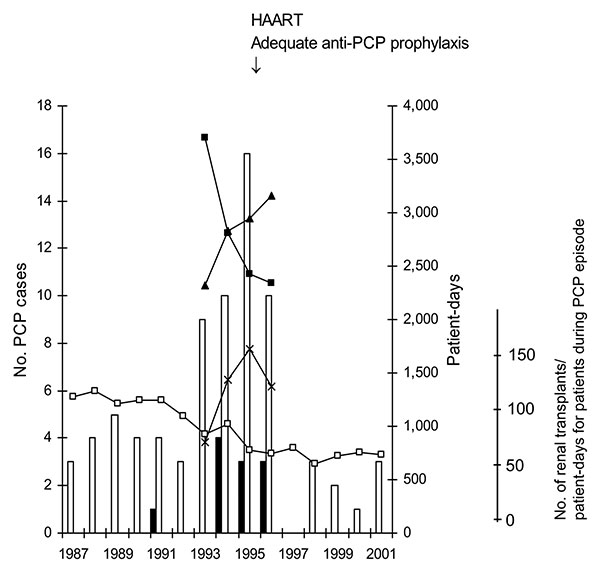Volume 10, Number 10—October 2004
Research
Molecular Evidence of Interhuman Transmission of Pneumocystis Pneumonia among Renal Transplant Recipients Hospitalized with HIV-Infected Patients
Figure 1

Figure 1. Pneumocystis jirovecii pneumonia (PCP) cases in HIV-infected patients (white bars) and in transplant recipients (gray bars) at building A of Edouard-Herriot Hospital. Solid lines show the number of hospital patient-days for transplant recipients (filled squares), for HIV-infected patients (filled triangles), and for the patients during their PCP episode (crosses), as well as the number of renal transplantations performed (white squares). HAART, highly active antiretroviral therapy.
1M. Rabodonirina, P. Francioli, and P.M. Hauser contributed equally to the work.
Page created: April 11, 2011
Page updated: April 11, 2011
Page reviewed: April 11, 2011
The conclusions, findings, and opinions expressed by authors contributing to this journal do not necessarily reflect the official position of the U.S. Department of Health and Human Services, the Public Health Service, the Centers for Disease Control and Prevention, or the authors' affiliated institutions. Use of trade names is for identification only and does not imply endorsement by any of the groups named above.